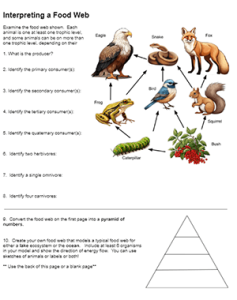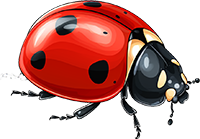
Students in high school biology study food webs and trophic levels. There is a little more detail than the basic food chain they may have learned in earlier grades. The topic is part of Chapter 4: Ecosystems (Miller and Levine). I introduce the chapter with a phenomenon – toxic algae blooms.
Students may struggle with the ecological pyramids, which show the number of organisms, energy stored at each level, and biomass. For my freshman, the concept of energy flow is new, but they seem to understand that there can only be a few top predators in a system.
I created this simple food chain and pyramid of numbers to reinforce those concepts. Many of the food web activities were too long and designed for younger students. I simply wanted my students to practice identifying primary, secondary, and tertiary consumers. I also wanted them to focus on how energy flows through an ecosystem.
Students will also identify the herbivore, carnivores, and omnivores in the food web. The only omnivore shown is the bird, which consumes both the plant and the caterpillar. The web models a forest (or grassland) ecosystem and includes an eagle as an apex predator.
The final question asks students to design their own food web, with a focus on aquatic ecosystems. They can use the back of the page, or a blank sheet of paper. I encourage my students to make sketches, but they can also just use words.
AI Images for Other Projects
This new worksheet is an update from an older version.
I created the image of the food web using artificial intelligence, an app called Midjourney. AI has been a great tool for reimagining some of the images in old worksheets. You can use it for your own projects. The subscription for that one is not free, but there are free alternatives out there. I think AI has a lot of potential to automate many tasks teachers do as routine. Chat-GPT does an amazing job creating a lesson plan!


